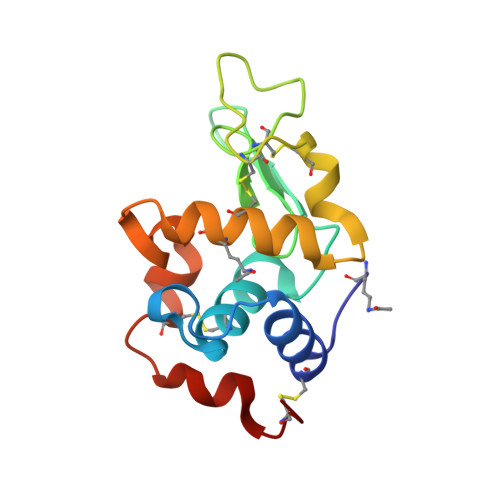Arsenoplatin-1 Is a Dual Pharmacophore Anticancer Agent.
Miodragovic, D., Merlino, A., Swindell, E.P., Bogachkov, A., Ahn, R.W., Abuhadba, S., Ferraro, G., Marzo, T., Mazar, A.P., Messori, L., O'Halloran, T.V.(2019) J Am Chem Soc 141: 6453-6457
- PubMed: 30943017
- DOI: https://doi.org/10.1021/jacs.8b13681
- Primary Citation of Related Structures:
5NJ1, 5NJ7 - PubMed Abstract:
Arsenoplatins are adducts of two chemically important anticancer drugs, cisplatin and arsenic trioxide, that have a Pt(II) bond to an As(III) hydroxide center. Screens of the NCI-60 human tumor cell lines reveal that arsenoplatin-1 (AP-1), [Pt(μ-NHC(CH 3 )O) 2 ClAs(OH) 2 ], the first representative of this novel class of anticancer agents, displays a superior activity profile relative to the parent drugs As 2 O 3 or cisplatin in a majority of cancer cell lines tested. These activity profiles are important because the success of arsenic trioxide in blood cancers (such as APL) has not been seen in solid tumors due to the rapid clearance of arsenous acid from the body. To understand the biological chemistry of these compounds, we evaluated interactions of AP-1 with the two important classes of biomolecules-proteins and DNA. The first structural studies of AP-1 bound to model proteins reveal that platinum(II) binds the Nε of His in a manner that preserves the Pt-As bond. We find that AP-1 readily enters cells and binds to DNA with an intact Pt-As bond (Pt:As ratio of 1). At longer incubation times, however, the Pt:As ratio in DNA samples increases, suggesting that the Pt-As bond breaks and releases the As(OH) 2 moiety. We conclude that arsenoplatin-1 has the potential to deliver both Pt and As species to a variety of hematological and solid cancers.
Organizational Affiliation:
Chemistry of Life Processes Institute , Northwestern University , 2145 Sheridan Road , Evanston , Illinois 60208 , United States.



















